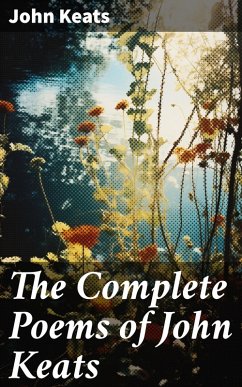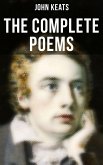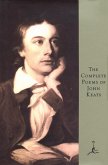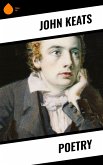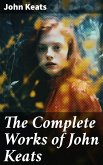This carefully edited collection has been designed and formatted to the highest digital standards and adjusted for readability on all devices. John Keats (1795-1821) was an English Romantic poet. The poetry of Keats is characterized by sensual imagery, most notably in the series of odes. Today his poems and letters are some of the most popular and most analyzed in English literature. Table of Contents: Introduction: Life of John Keats by Sidney Colvin Ode Ode on a Grecian Urn Ode to Apollo Ode to Fanny Ode on Indolence Ode on Melancholy Ode to Psyche Ode to a Nightingale Sonnets Sonnet: When I Have Fears That I May Cease to Be Sonnet on the Sonnet Sonnet to Chatterton Sonnet Written in Disgust of Vulgar Superstition Sonnet: Why Did I Laugh Tonight? No Voice Will Tell Sonnet to a Cat Sonnet Written Upon the Top of Ben Nevis Sonnet: This Pleasant Tale is Like a Little Copse Sonnet - The Human Seasons Sonnet to Homer Sonnet to A Lady Seen for a Few Moments at Vauxhall Sonnet on Visiting the Tomb of Burns Sonnet on Leigh Hunt's Poem 'the Story of Rimini' Sonnet: A Dream, After Reading Dante's Episode of Paulo and Francesco Sonnet to Sleep Sonnet Written in Answer to a Sonnet Ending Thus: Sonnet: After Dark Vapours Have Oppress'd Our Plains Sonnet to John Hamilton Reynolds Sonnet on Sitting Down to Read King Lear Once Again Sonnet: Before He Went to Feed with Owls and Bats Sonnet Written in the Cottage Where Burns Was Born Sonnet to The Nile Sonnet on Peace Sonnet on Hearing the Bagpipe and Sonnet: Oh! How I Love, on a Fair Summer's Eve Sonnet to Byron Sonnet to Spenser Sonnet: As from the Darkening Gloom A Silver Dove Sonnet on the Sea Sonnet to Fanny Sonnet to Ailsa Rock Sonnet on a Picture of Leander Translation from a Sonnet of Ronsard Two Sonnets on Fame Lamia Isabella Endymion Hyperion Stanzas Spenserian Stanza Spenserian Stanzas on Charles Armitage Brown Stanzas to Miss Wylie Robin Hood The Eve of St. Agnes
Dieser Download kann aus rechtlichen Gründen nur mit Rechnungsadresse in A, B, BG, CY, CZ, D, DK, EW, E, FIN, F, GR, H, IRL, I, LT, L, LR, M, NL, PL, P, R, S, SLO, SK ausgeliefert werden.

